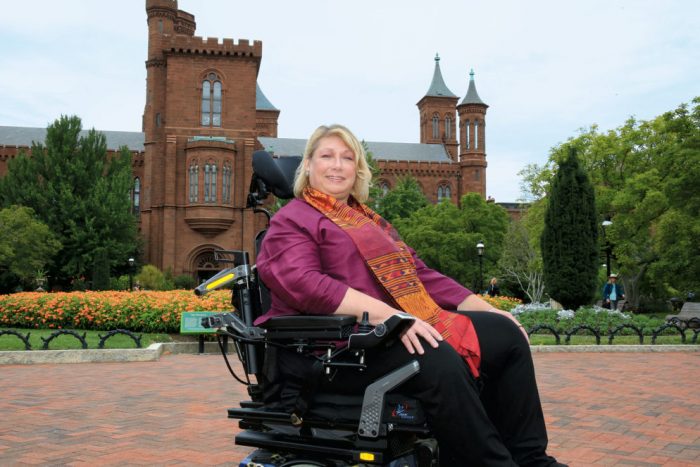Beth Ziebarth envisions a more inclusive Smithsonian
On and off the Mall, creating a culture that values diversity, equity, access and inclusion.
“The Smithsonian has done accessibility work for a long time, and we are really good at it,” says Beth Ziebarth, appointed in April to the pan-Institutional role of Deputy Head Diversity Officer.

In her new capacity, Ziebarth envisions “[expanding] work I’ve done with people with disabilities into the broader area of diversity, equity, access and inclusion,” she explains.
Many DEAI groups—from affinity groups such as the Pride Alliance to unit-based or SI-wide DEAI committees—are already doing excellent work, and Ziebarth says she is learning a great deal from her colleagues around the Smithsonian and exploring ways to share best practices.
Externally, greater societal awareness around the concepts undergirding DEAI has increased opportunities for Americans to talk about marginalized groups—including people with disabilities, both visible and non-apparent, she adds. “The disability community centers disability as part of diversity, seeking disability justice along with justice” for people of color, immigrants, the LGBTQIA+ community, and others.
Embracing a broadened point of view “is a good move forward for the U.S.,” she adds, and indeed the world.
The pandemic more clearly exposed multiple layers of social, racial and economic inequity. “We’re talking about everything from [unequal] access to medical care, food and other things you need for everyday living,” she says. Many people with disabilities were also negatively affected by the shortage of medical devices and other equipment they rely on due to supply chain snarls, yet another unhappy side effect of the pandemic.
Those who struggle with so-called “long COVID” now constitute their own marginalized group, Ziebarth explains.
According to an article published by the World Economic Forum, roughly one-third of people who are diagnosed with COVID-19 continue to experience symptoms six months or more after initial diagnosis.
“I’ve been thinking a lot about this group, how we need to prepare to serve them, how to think about visitor services, security, facilities and exhibition design differently,” she says.
On the other hand, the inroads the Smithsonian has made in terms of digitized collections and online programming are some of the “things we don’t want to change,” Ziebarth says. She singles out the online version of the See Me program, which allows adults with dementia and their care partners to explore objects from SI collections from the safety and comfort of home.
Participation in such programs is no longer predicated on driving down to the Mall or walking long distances in unfamiliar buildings, she explains. The icing on the cake? “How these virtual programs combat isolation” among people with various health conditions, as well as reduce their exposure to viruses that cause COVID-19 and other infections.
Ziebarth is passionate about promoting across the Smithsonian a more intersectional view of what it means to be a person with a disability, whether that person is a curator at the Freer, a cashier at NZP or a visitor to NMAI, and to highlight the potential contributions of each.
“A person with a disability has a race and an ethnicity and a gender orientation,” she says. In this new capacity, “I have a chance to show how valuable our differences are and how we need to think about them within the SI workforce.
“We do substantial work with diverse external communities. Now we need to turn inward, to create a culture [grounded in] diversity and inclusion, both as individuals and at the unit level. We want everybody who is on staff to feel like they can bring their whole selves to work and feel respected and valued.”
Regardless of whether or not a person identifies as disabled, there is always an opportunity to serve as a good ally to someone else, she contends. Serving as an ally to someone in any marginalized group can take many different forms, some of which may be codified in Smithsonian policies and some of which comes down to decency and common sense.
In the end, supporting a cultural shift toward valuing DEAI means that “we as individuals think about how we are open to being an ally to people who have identities other than our own,” Ziebarth concludes.
Ziebarth continues to serve as director of Access Smithsonian, a role she has held since 2001.
Posted: 5 August 2022
- Categories:







